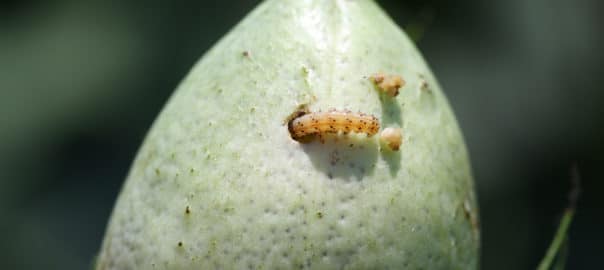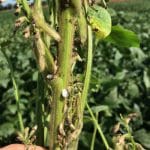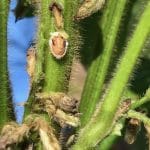Cotton – Even for our latest cotton, given an average frost date of around October 15, this is the last week you can likely justify insecticide applications to cotton. Based on average historical temperatures, the last effective bloom date was two week ago. A late flurry of bollworm moth activity has forced some sprays this week, and most folks are electing to go cheap (pyrethroid + acephate) because residual control in less important at this late date. With some exceptions, I agree with this strategy.
I’ve had a few complaints about Besiege or Prevathon, but the opposite is also true. In my tests, those products have performed as expected. I think expectations are set a little too high. We do not have foliar-applied insecticides that will provide flawless control of bollworm. Some worms are sneaky about staying in and under bloom tags or within a boll for a week if not longer at times, and although you will winnow some of them out over time, you will also find worms that you expected to be dead. It’s understandable that people get annoyed by seeing survivors after application given the relatively high costs of these products. But we all know the underlying problem is the need to spray 2-gene cotton, sometimes twice, for bollworm control.
Reminder – “cut out” occurs when a field hits NAWF=5. Flowers present at this time represent the last bolls you are likely to pick. Several folks have mentioned wanting to protect the ‘top crop’ (meaning blooms, squares, and very small bolls). If you are sitting at NAWF 3 or less, you can bet the farm any of those fruit will shed, or in later cotton, have little chance of making it into the picker basket before a frost. Any applications now are actually meant to protect bolls that are at least 10-15 days old.
Soybean – We’ve had a pretty good flurry spraying for corn earworm in some late maturing soybean fields in the Mississippi River Bottom. I’m also seeing building stink bugs and kudzu bugs at some locations, particularly in fields at R5 +. The threshold for stink bugs and kudzu bugs in 9/25 sweeps and 25 nymphs/25 sweeps, respectively. The good news is we are seeing a fungus (Beauveria) starting to take some kudzu bugs out (pictured below). This fungus can be very effective at reducing kudzu bug populations.
Don’t forget to monitor defoliating insects like loopers, green cloverworm, and bean leaf beetles as we move forward. Our goal is to keep defoliation levels less than 20% from R1 – R6. I’m hearing reports of loopers to the south of Tennessee, and they are always a potential problem in late maturing fields. Refer to https://guide.utcrops.com/soybean/soybean-insect-guide/ for more detailed information about management of soybean insects including treatment thresholds and recommended insecticides.
Have a great Holiday weekend!




